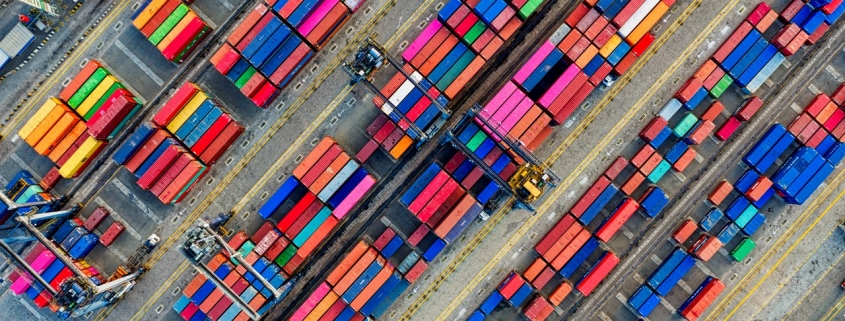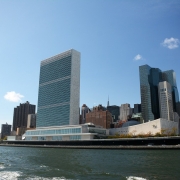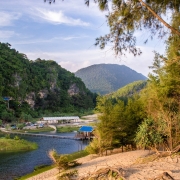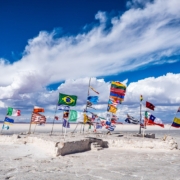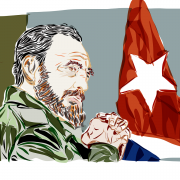ASEAN Economic Cooperation during the Cold War
Topic of Study [For H2 History Students]:
Paper 2: Regional Conflicts and Co-operation
Source Based Case Study
Theme III Chapter 2: ASEAN (Growth and Development of ASEAN : Building regional peace and security)
ASEAN Economic Cooperation after 1976
Following the historic Bali Summit in February 1976, ASEAN members signed the Treaty of Amity and Cooperation (TAC) as well as the ASEAN Concord. By doing so, member states expressed their common desire to promote economic cooperation against the backdrop of the growing threat of Communism in Southeast Asia.
However, it is imperative to observe that regional economic integration was not on the top of the priority list for many member nations.
Prior to the late 1980s, consideration of deep regional economic integration remained taboo and the focus was on economic cooperation…
ASEAN’s preference for regional economic cooperation rather than deep regional economic cooperation rather than deep integration in the 1970s and 1980s reflects the reluctance of some ASEAN countries to undertake trade and investment liberalisation owing to the pursuit of industrial policies of import substitution and picking winners.
An excerpt from “ASEAN Economic Cooperation and Integration” by Siow Yue Chia, Michael G. Plummer
According to the authors, “deep economic cooperation” refers to the removal of artificial barriers to promote international trade. In contrast, “economic integration” implies the aim of forming a Free Trade Agreement, economic community or customs union.
Diverging perceptions towards regional economic integration
Although the ASEAN Concord signified the member states’ desire to engage in regional economic cooperation through the setup of large-scale industrial projects within Southeast Asia, some had reservations over economic integration.
According to Widjojo Nitisastro, Indonesia had resisted all notions of trade liberalization and regional economic integration. Indonesia, he said, was more concerned with food, as well as energy, security and with the establishment of large-scale industrial projects.
An excerpt from “Southeast Asian in Search of an ASEAN Community: Insights from the former ASEAN Secretary-General” by Rodolfo C. Severino
Under Suharto’s leadership, Indonesian economist Widjojo Nitisastro took the lead in shaping the ‘New Order’ government’s economic policies. Notably, Nitisastro was part of the ‘Berkeley Mafia’ group that operated as technocrats to guide economic development in Indonesia.
Such views were expressed during the inaugural ASEAN Economic Ministers’ Meeting (AEMM) that was held in March 1976. Some membere states expressed concerns over access to essential resources and food like crude oil and rice respectively.
Preferential Trading Arrangement (PTA)
The PTA was introduced in July 1977, in which member nations would allow imports from other members a “margin of preference on Most Favoured Nation (MFN) tariffs”.
After a decade of ongoing negotiations, the economic ministers agreed that the PTA would be applied to at least 90% of the items traded within ASEAN with at least 50% of the value of intra-ASEAN trade.
Unfortunately, intra-ASEAN trade remained low. During the 1991 meeting, economic ministers, it was reported that the value of intra-ASEAN trade in items covered by the PTA barely increased from US$121 million in 1987 to US$578 million in 1989.
The following document produced by the United Nations Industrial Development Organization (UNIDO) reveals the underlying problems that explained the limited success of the PTA:
The existing low level of intra-ASEAN trade has always been the rallying point for the “regionalists”, who strongly advocate a rapid growth of intraregional trade in order to diversify the region’s market base and to reduce its over-dependence on the industrialized countries.
However, intra-ASEAN trade since 1976 has simply failed to take off in real terms and remained stagnant at around the 15 per cent…
At the same time, the stagnancy of intra-ASEAN trade also reflects the tremendous structural problems and institutional biases operating against intraregional trade.
An exceprt taken from the UNIDO report titled “Regional Industrial Co-operation: Experiences and Perspective of ASEAN and the Andean Pact”, 1983.
The ASEAN Industrial Projects (AIP)
In March 1980, the AIP was formalised to encourage member states of ASEAN to engage in economic cooperation. According to the Basic Agreement on ASEAN Industrial Projects, the host country was required to invest 60% of the equity, while the other four member nations would occupy the remaining 40%.
However, ASEAN encountered stumbling blocks against due to the perceptions of intra-ASEAN competition as possible conflicts to their national interests.
Among the approved ASEAN Industrial Projects, only the urea fertilizer plants in Aceh in northern Sumatra and Bintulu in central Sarawak have survived as such. No ASEAN country was willing to see curbs on its option to put up industries similar to those allocated to another ASEAN country.
… The ASEAN countries’ lack of enthusiasm for AIP’s other than their own was indicated by the fact that Brunei Darussalam and the Philippines, as well as Singapore, were willing to commit only one per cent each of the Thai potash project’s equity…
An excerpt from “Southeast Asian in Search of an ASEAN Community: Insights from the former ASEAN Secretary-General” by Rodolfo C. Severino
The ASEAN Way: Conflict versus Consensus-building
Nevertheless, there were member nations within ASEAN that advocated regional economic cooperation, even though the slow progress in the 1980s left much to be desired.
Given Singapore’s inherent challenges of lacking a sizable market, the government was a strong supporter of ASEAN economic integration.
We have spoken in one voice against protectionist policies. For our admonitions to be effective, however, we must practise what we preach. In our policies to promote intra-ASEAN trade, we must not put barriers to trade between ASEAN and the industrial countries. We cannot expect others to keep their markets open to ASEAN products if we close our markets to theirs.
… One cardinal principle ASEAN has practised is to agree by consensus. Consensus ensures that the national interest of any member will not be compromised. I suggest the time has come for greater latitude in defining ‘consensus’ so as to widen the areas of cooperation. When four agree and one does not object, this can still be considered as consensus; and the four should proceed with a new regional scheme. An ASEAN five-minus-one scheme can benefit the participating four without damaging the abstaining one. Indeed, the abstaining one may well be encouraged to join in later by the success of the scheme.
An excerpt from a speech by then Prime Minister Mr Lee Kuan Yew during the Ninth Meeting of the ASEAN Economic Ministers, 21 April 1980.
What can we learn from this article?
Consider the following question:
– How far do you agree that ASEAN was effective in promoting regional economic co-operation from 1976 to 1991?
Join our JC History Tuition and consolidate your knowledge for topics like Regional Conflicts and Cooperation.
The H2 and H1 History Tuition feature online discussion and writing practices to enhance your knowledge application skills. Get useful study notes and clarify your doubts on the subject with the tutor. You can also follow our Telegram Channel to get useful updates.
We have other JC tuition classes, such as JC Math Tuition and JC Chemistry Tuition. For Secondary Tuition, we provide Secondary English Tuition, Secondary Math tuition, Secondary Chemistry Tuition, Social Studies Tuition, Geography, History Tuition and Secondary Economics Tuition. For Primary Tuition, we have Primary English, Math and Science Tuition. Call 9658 5789 to find out more.

